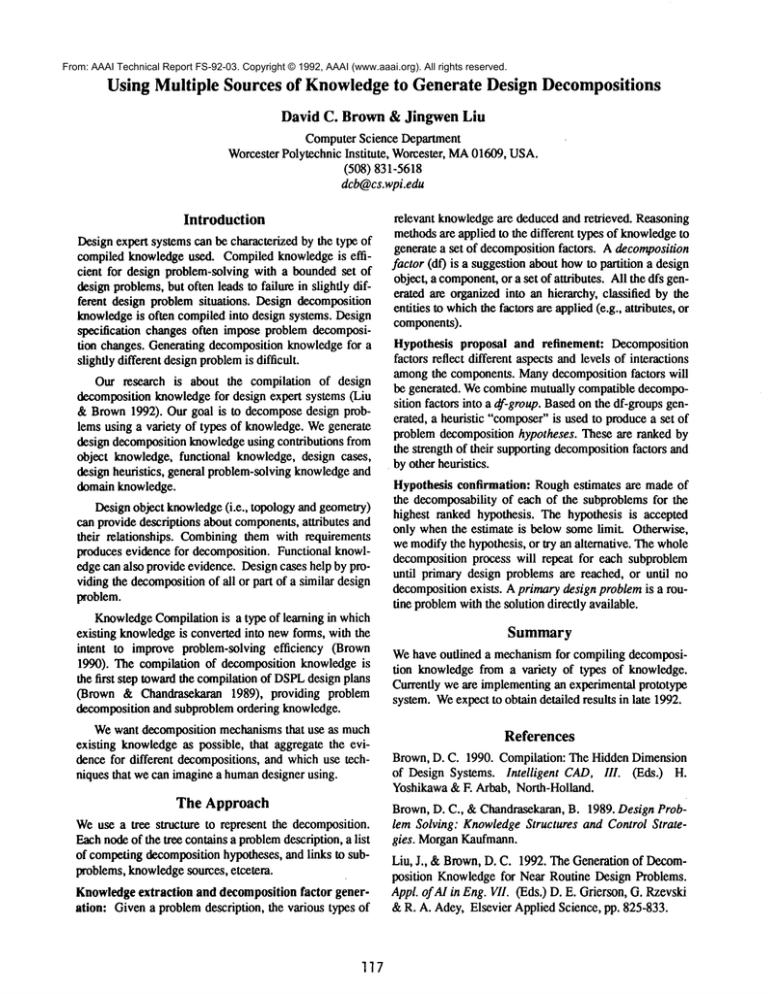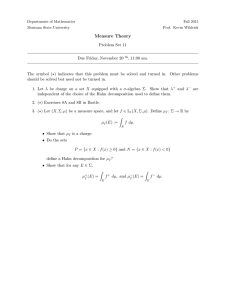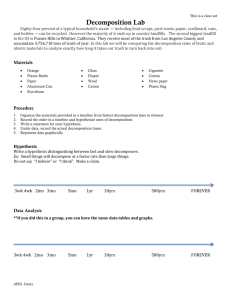
From: AAAI Technical Report FS-92-03. Copyright © 1992, AAAI (www.aaai.org). All rights reserved.
Using Multiple Sources of Knowledge to Generate Design Decompositions
David C. Brown& JingwenLiu
Computer Science Department
Worcester Polytechnic Institute, Worcester, MA01609, USA.
(508) 831-5618
dcb@cs.wpi.edu
Introduction
Design expert systems can be characterized by the type of
compiled knowledge used. Compiled knowledge is efficient for design problem-solving with a bounded set of
design problems,but often leads to failure in slightly different design problem situations. Design decomposition
knowledgeis often compiled into design systems. Design
specification changes often impose problem decomposition changes. Generating decomposition knowledgefor a
slightly different design problemis difficult.
Our research is about the compilation of design
decomposition knowledgefor design expert systems (Liu
& Brown1992). Our goal is to decomposedesign problems using a variety of types of knowledge. Wegenerate
design decomposition knowledgeusing contributions from
object knowledge, functional knowledge, design cases,
design heuristics, general problem-solving knowledgeand
domain knowledge.
Design object knowledge(i.e., topology and geometry)
can provide descriptions about components,attributes and
theft relationships. Combiningthem with requirements
produces evidence for decomposition. Functional knowledge can also provide evidence. Designcases help by proriding the decompositionof all or part of a similar design
problem.
KnowledgeCompilation is a type of learning in which
existing knowledgeis converted into new forms, with the
intent to improve problem-solving efficiency (Brown
1990). The compilation of decomposition knowledge is
the first step towardthe compilation of DSPLdesign plans
(Brown & Chandrasekaran 1989), providing problem
decomposition and subproblem ordering knowledge.
Wewant decomposition mechanismsthat use as much
existing knowledgeas possible, that aggregate the evidence for different decompositions, and which use techniques that we can imagine a humandesigner using.
The Approach
Weuse a tree structure to represent the decomposition.
Eachnode of the tree contains a problemdescription, a list
of competingdecompositionhypotheses, and links to subproblems, knowledgesources, etcetera.
Knowledgeextraction and decomposition factor generation: Given a problem description, the various types of
ll7
relevant knowledgeare deduced and retrieved. Reasoning
methodsare applied to the different types of knowledgeto
generate a set of decompositionfactors. A decomposition
factor (dO is a suggestion about howto partition a design
object, a component,or a set of attributes. All the dfs generated are organized into an hierarchy, classified by the
entities to whichthe factors are applied (e.g., atwibutes, or
components).
Hypothesis proposal and refinement: Decomposition
factors reflect different aspects and levels of interactions
amongthe components. Manydecomposition factors will
be generated. Wecombine mutually compatible decomposition factors into a df-group. Basedon the df-groups generated, a heuristic "composer"is used to producea set of
problem decomposition hypotheses. These are ranked by
the strength of their supporting decompositionfactors and
by other heuristics.
Hypothesis confirmation: Rough estimates are made of
the decomposability of each of the subproblems for the
highest ranked hypothesis. The hypothesis is accepted
only when the estimate is below some limit. Otherwise,
we modifythe hypothesis, or try an alternative. The whole
decomposition process will repeat for each subproblem
until primary design problems are reached, or until no
decompositionexists. A primary design problem is a routine problemwith the solution directly available.
Summary
Wehave outlined a mechanismfor compiling decomposition knowledge from a variety of types of knowledge.
Currently we are implementingan experimental prototype
system. Weexpect to obtain detailed results in late 1992.
References
Brown, D. C. 1990. Compilation: The Hidden Dimension
of Design Systems. Intelligent
CAD, IlL (Eds.)
Yoshikawa & E Arbab, North-Holland.
Brown, D. C., & Chandrasekaran, B. 1989. Design Problem Solving: KnowledgeStructures and Control Strategies. MorganKaufmann.
Liu, J., & Brown, D.C. 1992. The Generation of Decomposition Knowledgefor Near Routine Design Problems.
Appl. oral in Eng. VII. (Eds.) D. E. Gricrson, (3. Rzevski
& R. A. Adey, Elsevier Applied Science, pp. 825-833.








